Learning Outcomes
After this course, learners will be able to:
- Outline the steps the professional and recipient will take to participate in Remote Programming.
- Explain the benefits of CROS technology for recipients who only hear from one CI and need more support.
- List new features of Target CI v1.5.
Powerful Connections: Expanding the Marvel Platform
Welcome to AB’s training on the expansion of the Marvel platform. Marvel CI introduced many great features to you and your patients, like wireless programming, bimodal fitting in one software, and Marvel hearing technology. Now, AB is expanding Marvel CI, providing you with even more options to bring optimal hearing healthcare to every patient.
This text course will educate you on how you can empower your patients for powerful hearing experiences and help them take advantage of new features for Marvel CI. AB is excited to introduce you to all of these new possibilities. With this launch, AB is expanding on the most successful product portfolio in our 30-year history. AB is building on a strong foundation of expertise with innovative approaches to optimize hearing healthcare by creating better workflows, providing new ways for people to hear more, and providing innovative telehealth solutions. AB recipients can utilize Universal Bluetooth Connectivity with the AB Remote Support app, experience Marvel from Ear to Ear with the introduction of CROS for Marvel CI and enjoy Powerful Hearing Experiences with Target CI v1.5 Universal Bluetooth Connectivity.
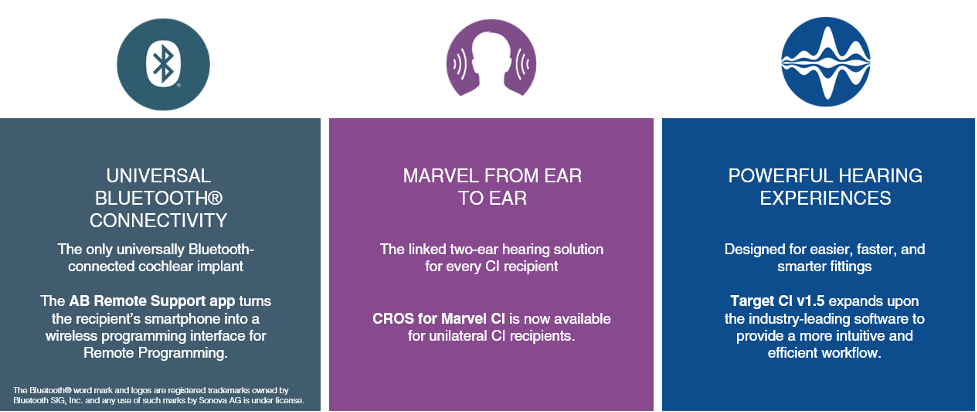
Figure 1. Three pillars that expand the Marvel platform.
AB has a unique advantage when it comes to connectivity as we offer the only universally connected sound processor. Marvel CI provides wireless streaming from any Bluetooth device, including iPhone and Android, laptops, smart TVs, gaming consoles, tablets, and more.
AB recipients with Marvel CI can utilize video chat and truly hands-free calling. AB is proud to say that 97% of hearing care professionals agree that Marvel CI connects to more personal devices than any other CI. With Bluetooth compatibility with Noahlink Wireless, AB provides easier recipient care. With the new version of Target CI, AB offers complete Remote Programming, which is a unique advantage, thanks to Marvel CI's Bluetooth capabilities. For the first time, hearing care professionals can connect with recipients remotely to provide complete programming services. This text course will demonstrate why Remote Programming will be game-changing for you and your patients and will provide suggestions to successfully implement this new feature into your clinical practice.
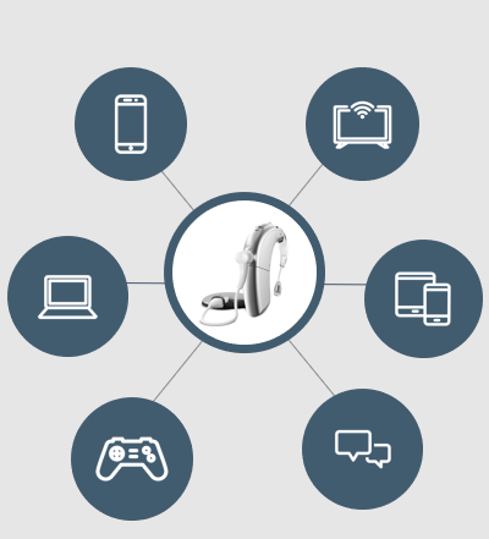
Figure 2. Examples of Bluetooth connectivity options for Marvel CI. Telemedicine Use Among Adults: United States, 2021 https://www.cdc.gov/nchs/products/databriefs/db445.htm
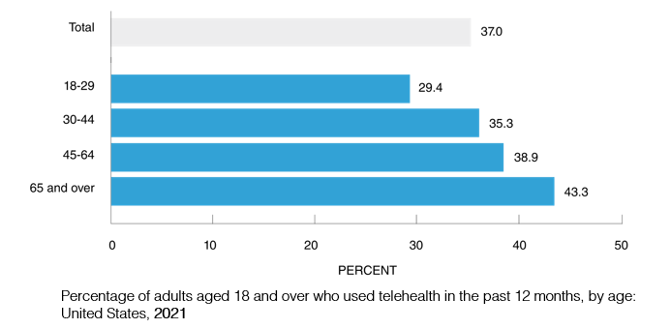
Figure 3. Percentage of adults aged 18 and over who used telehealth in the past 12 months, by age in the United States in 2021.1
Have you used telehealth for any of your personal healthcare appointments this year? What percentage of adults do you think use telehealth services in a given year?
What are some of the most common reasons why your patients miss appointments?
In 2021, 37% of adults in the US used telehealth, more than a third of the population. The global pandemic forced healthcare professionals to adapt quickly to continue delivering patient care, including by pivoting to telehealth. When telehealth use is broken down by age, data shows that use actually increases with age, with more than 43% of adults aged 65 and older using telehealth.
Recently, AB staff have been able to talk to some recipients and family of AB recipients about how they may benefit from Remote Programming in the future. AB staff spoke with one recipient who said that her trips to her audiologist are typically an all-day affair. She drives three hours each way for her appointments. She has to take time off work to go to her appointments and in inclement weather, she often may need to delay her care. After one appointment, she even returned home to discover one setting was not adjusted quite right and she had to make the return trip to the cochlear implant (CI) clinic for a change that took the audiologist less than five minutes to complete.
Hearing care professionals feel the impact of this in their day-to-day schedules as well. As a hearing care professional, all of these factors lead to missed appointments or patients showing up late. AB staff spoke to another recipient who was a working parent who described the stress of getting his two kids to their CI appointments from missing school, to dealing with traffic and parking in a huge hospital complex, then coaxing kids through the maze of hospital offices. This was all very stressful for a working parent, and he sees that the opportunity for Remote Programming will be a major stress reliever for busy families.
AB staff have also worked with a number of CI programming professionals in the field who feel strongly about the benefits of telehealth and have been looking forward to offering this to their patients. Jessica Messersmith, Ph.D., a CI audiologist, said “It's not just about improving access to those in rural areas. Telehealth is about making it easier for everyone to access healthcare.” This highlights that hearing care professionals should not be the barrier to patients receiving better care and better outcomes. Through telehealth, hearing care professionals can support their patients where they are.
How Remote Programming Works
The AB Remote Support app turns your patient's smartphone into a wireless programming interface, allowing for complete Remote Programming of the Marvel system. This allows the hearing care professional to use Target CI v1.5 to remotely make adjustments, counsel on device use, and discuss plans for rehab.
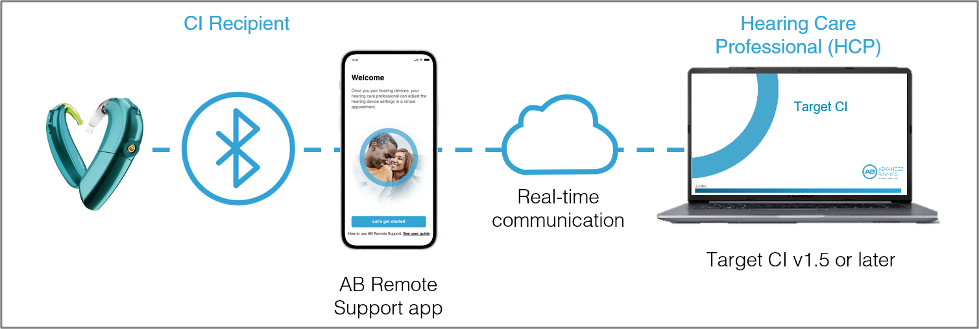
Figure 4. How remote programming works.
After an initial appointment in which the recipient must be programmed in Target CI v1.5, follow-up programming sessions can be conducted online in real time in the recipient's own environment rather than taking place in the clinic. Remote Programming visits can replace in-clinic follow-up visits.
Participating in a Remote Programming session is quick and simple. For AB recipients to participate in Remote Programming, they will need the following:
- A smartphone with the AB Remote Support app (Apple iOS 11 or higher; Android OS 6 or higher)
- Access to an internet connection (*Wi-Fi, LAN or 4G with at least 5 Mbit/s of data transfer connection for uploads and downloads)
- Compatible hearing devices including Naída CI M, Sky CI M, or bimodal technology with the Naída Link M or Sky Link M that have been programed in Target CI v1.5.
For a clinic to offer Remote Programming, the following is needed:
- A computer that is connected to the internet with a webcam.
- If your clinic computer does not have a built-in camera, an external webcam can be used.
- Target CI v1.5 or later.
Steps for the Hearing Care Professional and the Recipient
Let’s go through the steps for the hearing care professional and recipient when participating in a Remote Programming session.
- When joining the session, the recipient will simply open the AB Remote Support app. If the hearing devices have not already been paired in the app, that step can be completed at the time of the Remote Programming session. Otherwise, if the devices have been previously paired, the recipient will simply join the waiting room.
For the hearing care professional, Target CI v1.5 will be opened on a computer that is connected to the internet, and a client file selected. Then simply select Start Remote Support to begin.

Figure 5. Start “Remote Support” in Target CI v1.5 will initiate a Remote Programming Session.
At least one fitting session needs to be completed in Target CI v1.5 on a computer that is connected to the internet in order to access Remote Programming. It is easy to start a Remote Programming appointment in Target CI v1.5. Simply select the Previous Session, then Start Remote Support. The video call will start and once the recipient joins, the Remote Programming appointment may begin.
- During the fitting session, the recipient will want to keep the AB Remote Support app open and follow instructions given to them by the hearing care professional. The hearing care professional can conduct the programming session like they would an in-person session as full programming functionality is available.
- To end the session, the recipient simply selects Done when the hearing care professional has concluded the call. The hearing care professional can Save and Close the programming session and continue to give the recipient instructions via video if necessary. Then the hearing care professional can end the call or reconnect to the session if any further programming changes are needed.
The process is quick and simple for both the recipient and the hearing care professional.
Remote Programming Resources
AB has a number of resources to support not only you, the hearing care professional, but also your patients as you get started with Remote Programming.
Resources for hearing care professionals include:
- Professional Clinical Tools
- eLearning course
Resources for recipients include:
- Getting Started video for recipients
- AB Remote Support Tear-Off Pad
Please share these resources with your patients ahead of their Remote Programming appointment so they feel even more comfortable and can review the tips for the most successful experience.
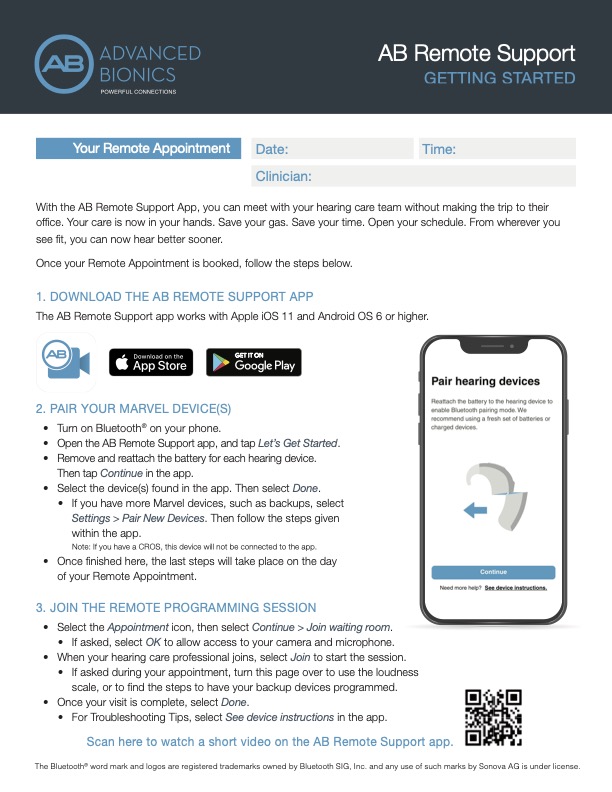
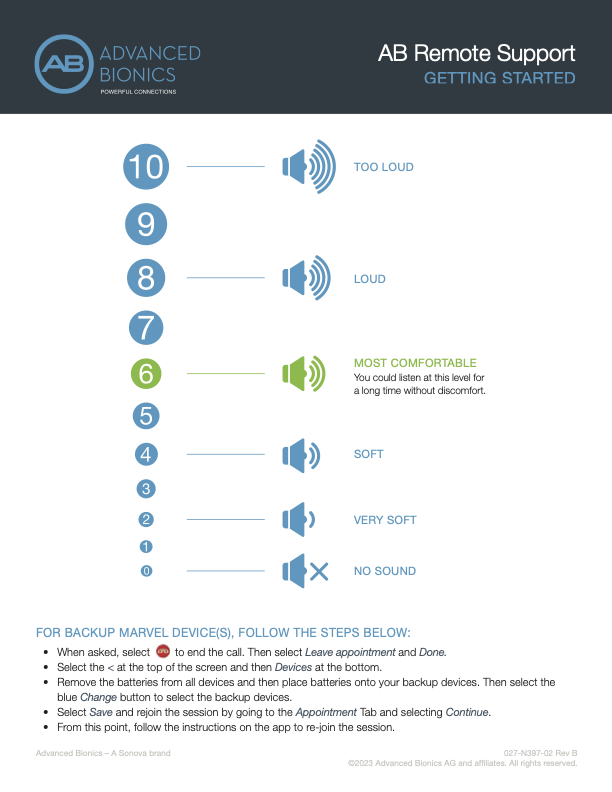
Figure 6. Quick Guides on Remote Programming.
The AB Advantage
AB has a unique advantage in that we offer the only universally connected sound processor. AB is proud to be the only CI company offering complete app-based Remote Programming.
AB and other manufacturers offer some level of remote support, including the ability to:
- Subjectively assess how the recipient is progressing and discuss any concerns.
- Make global adjustments, like master volume, bass, treble, and adjustments of sound processor settings.
- Check impedances and datalogs.
- Enable Live Speech
Only AB offers a complete Remote Programming experience. There are a number of adjustments that can only be completed with AB's Remote Programming technology including the ability to:
- Measure NRI.
- Create a new map.
- Measure upper and lower simulation levels on individual electrodes or groups of electrodes.
- Conduct bilateral programming by measuring each side individually.
- Adjust advanced parameters (e.g., pulse width).
- Create and download programs.
- Conduct bimodal Remote Programming of both the CI and the hearing aid in one software and in one session.
Remote Programming Benefits
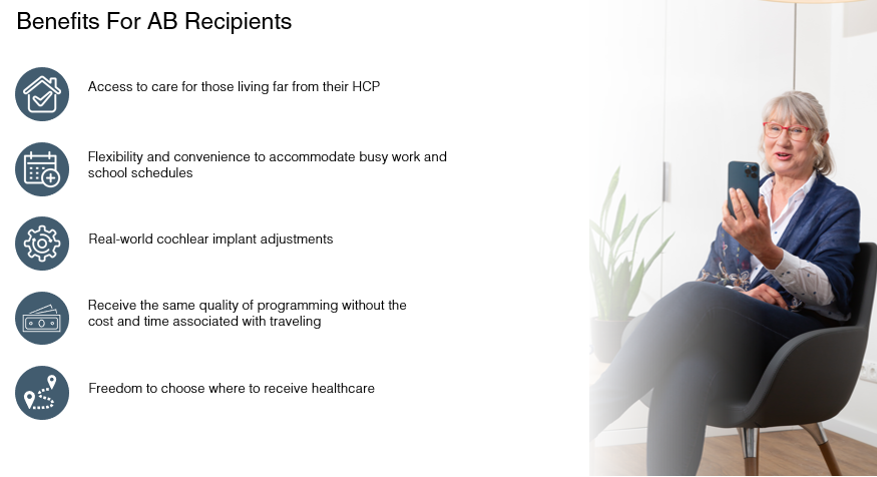
Figure 7. Benefits of Remote Programming for AB recipient.
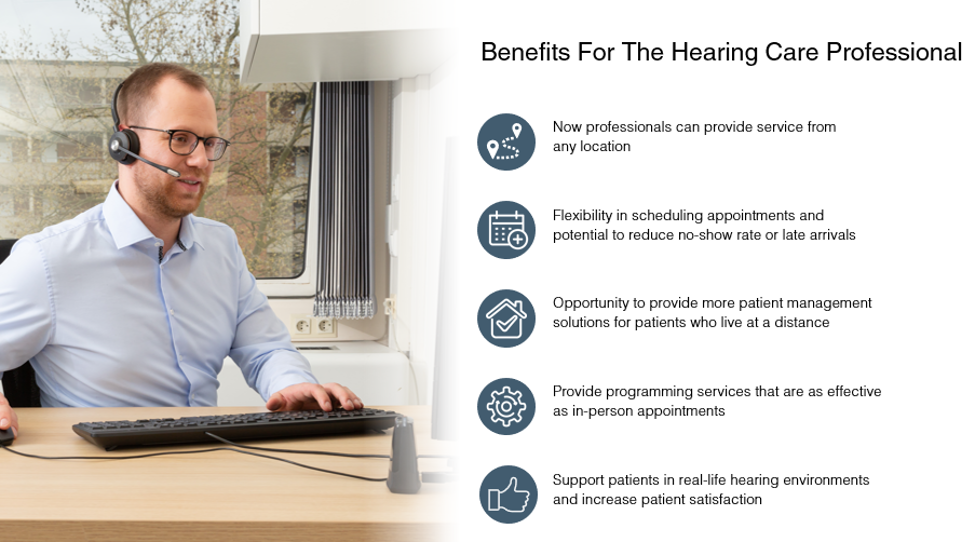
Figure 8. Benefits of Remote Programming for hearing care professionals.
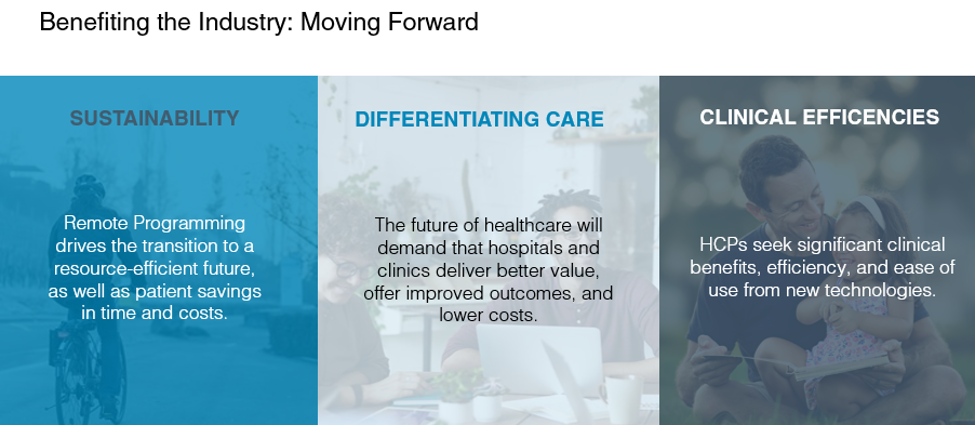
Figure 9. Benefits of Remote Programming for the hearing healthcare industry.2, 3, 4
Remote Programming White Paper
AB is excited to introduce some of the data that highlights the benefits of Remote Programming in the Remote Programming White Paper. AB conducted a multicenter pivotal clinical trial to evaluate the safety and efficacy of Remote Programming with Target CI v1.5, with the goal of determining whether hearing performance is similar in programs created via a Remote Programming session versus an in-person programming visit.
The data shows two key takeaways:
- Clinical outcomes with Remote Programming are no different than in-person programming.
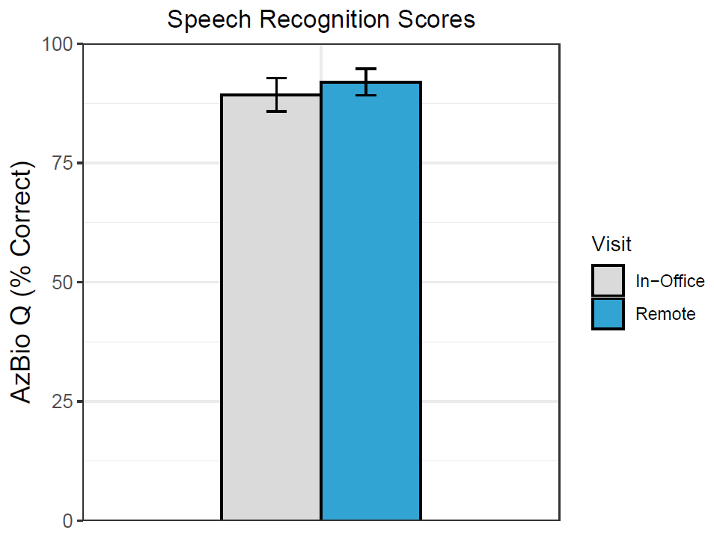
Figure 10. Clinical outcomes with Remote Programming.5
- Remote Programming offers recipients increased convenience and increased ease of access to care.
- Fitting durations were similar for each listening modality (in-person versus remote).
- Remote Programming offers considerable cost and time savings for the recipient compared to an in-person visit. When asked in a questionnaire about the approximate time spent in total during a typical CI office visit (including time spent in travel, wait, and appointment times), responses ranged from one hour to more than four hours for 88.2% of study participants. When asked if in person visits related to CI care were covered by their insurance, 41.2% of participants were not reimbursed for all costs associated with the CI clinic visit.
- Attitudes towards Remote Programming were positive. Specifically, participant ratings were higher on average, suggesting that Remote Programming was similar to their in-person experience. Audiologists also reported the Remote Programming experience as positive, and they said that they would recommend it as an alternative to some in-person visits.
Ultimately, clinical outcomes are the same and Remote Programming can save time, money, and increase convenience for your patients.
Tips for Success
There are a few simple steps that the hearing care professional can take during the in-person programming appointment to increase the recipient’s success with Remote Programming.
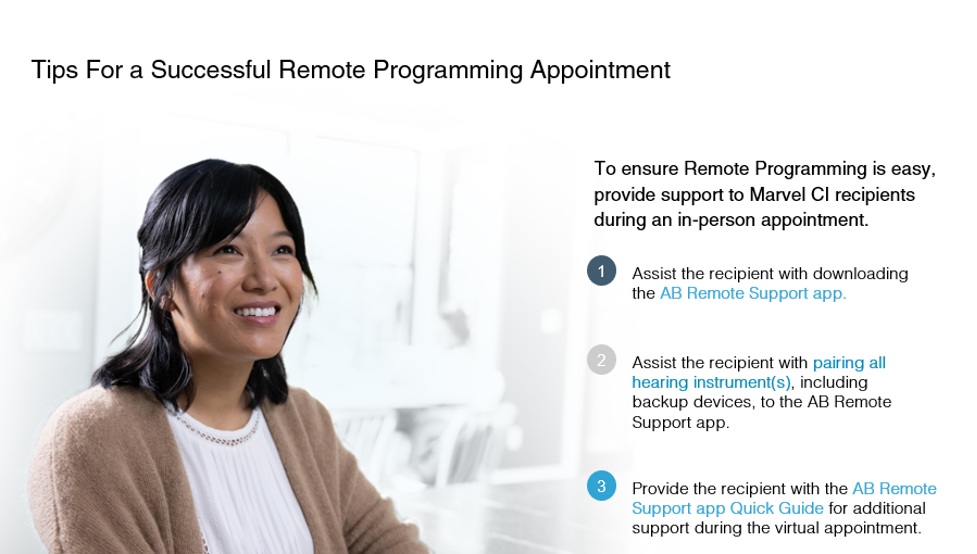
Figure 11. Tips for the hearing care professional for a successful Remote Programming appointment.
AB staff have spoken with a number of hearing care professionals who have worked with Remote Programming and have started to hear some really great suggestions to make Remote Programming appointments as seamless as possible for you and for your patients. Here are some tips to consider as you think about how to best incorporate Remote Programming into your practice.
- During the appointment, it can be helpful to take advantage of the information that the Remote Programming session provides. For example, look at the battery life of the Marvel CI devices, and look at the Wi-Fi connection, and connection status to help troubleshoot during the appointment.
- It is helpful to make sure that your patient can see and hear you during the Remote Programming appointment. Think about the lighting in the room to make sure the recipient has a clear view of the hearing care professional. Also, consider using a headset with a boom mic rather than their computer-based mic for the best audio quality.
Marvel from Ear to Ear with CROS
AB believes that every recipient deserves to Marvel from Ear to Ear with a linked two-ear solution. AB has had a long history of being the only CI provider to have numerous linked two-ear hearing solutions. Enjoying the sounds of the world more completely requires two devices that let recipients hear from both sides. Marvel's linked two-ear hearing solutions provide a richer, cleaner sound quality and a more natural 360 degree hearing experience.
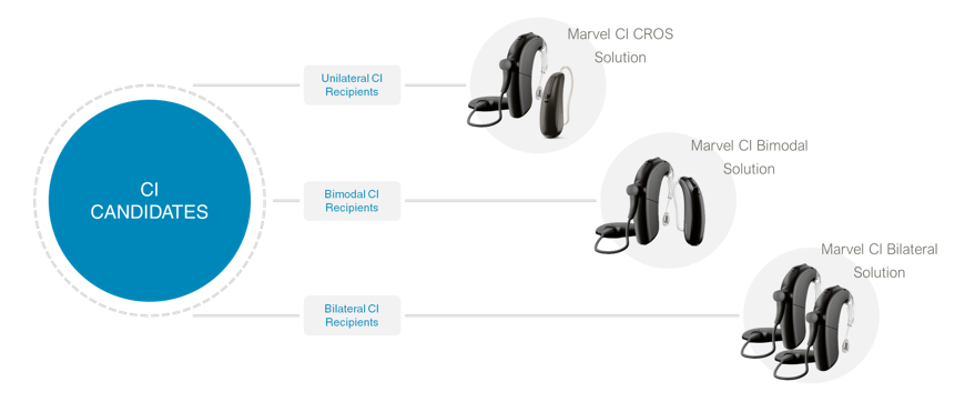
Figure 12. Linked two-ear hearing solutions from Advanced Bionics.
Note: Advanced Bionics cochlear implants are indicated for adults with severe to profound bilateral sensorineural hearing loss (≥ 70 dB HL) and for pediatrics with profound bilateral sensorineural hearing loss (≥ 90 dB HL).
Phonak CROS P-13 is the much-awaited solution for Marvel CI recipients who only hear from one side and need more support. Many hearing care professionals have reported that their patients who benefit from CROS CI with their Naída CI Q technology were hesitant to upgrade to Marvel CI because they did not want to give up that CROS device on their non-implanted ear. AB is excited that CROS is now available for Marvel CI, providing a linked two-ear hearing solution for every unilateral CI recipient.
Another two-ear hearing solution is Marvel CI with a Naída Link M hearing aid, or the Sky Link M hearing aid. This is the Link M Bimodal solution, which may be best for those with some hearing in one ear.
Bilateral Marvel CIs provide the ultimate stereo solution for those with severe to profound hearing loss in both ears. Marvel has flexible solutions to help recipients thrive in a world of sound.
AB offers three options for hearing from both sides, now including Marvel CI and CROS. AB continues to be the only manufacturer to offer a CROS solution for cochlear implant recipients.
CROS provides a number of benefits for AB recipients with one Marvel CI.
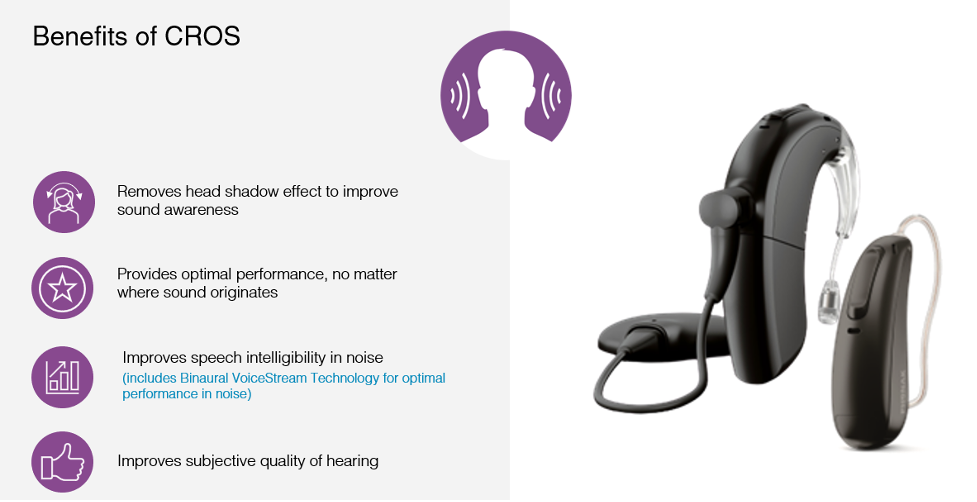
Figure 13. Benefits of CROS.6, 7, 8
Through a firmware update to the Marvel CI sound processor and Target CI v1.5, Marvel CI recipients can have a linked two-ear hearing solution with CROS. Utilizing CROS provides unilateral CI recipients with the best possible hearing through a linked two-ear hearing solution.
Programming CROS in Target CI v1.5
Programming CROS is simple and straightforward. After connecting to Target CI v1.5 software via Noahlink Wireless, the hearing care professional can program Marvel CI as normal, measuring M levels, setting fitting parameters, and adding programs as needed.
A few additional adjustments are available in Target CI v1.5 to customize CROS performance for each recipient.
- CROS Balance is a feature that allows a recipient to maintain a balance of sound between the Marvel CI sound processor and CROS.
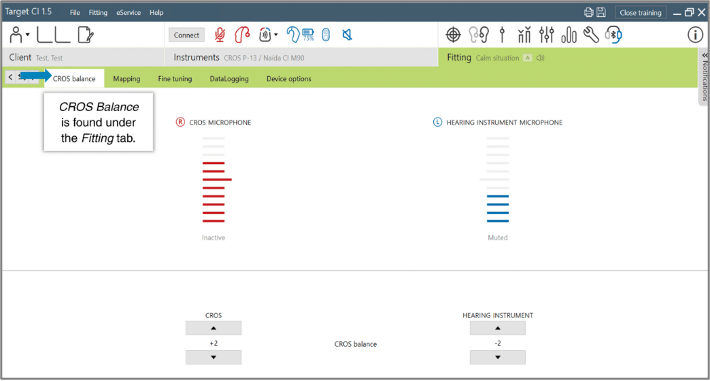
Figure 14. CROS balance in Target CI v1.5.
- Binaural VoiceStream Technology is available for Marvel CI M90 and Sky CI recipients who are using CROS to help them to understand speech in challenging noisy environments.
These additional parameters can be adjusted to enhance the overall CROS experience.
CROS Resources
CROS is a part of the Marvel CI ecosystem for better hearing, including RogerDirect, streaming from Bluetooth devices, Binaural VoiceStream Technology and PartnerMic.
CROS resources for the hearing care professional include:
- Professional Clinical Tools
- CROS eLearning courses
Figure 15. Phonak CROS P-13 Quick Guide within the Professional Clinical Tools
Creating Powerful Experiences with Target CI v1.5
Target CI was the industry's first software to combine fitting a hearing aid with a cochlear implant with the ease of a Noah database system and wireless connectivity. With this Marvel expansion, AB incorporates insights from hearing care professionals like you to add workflow enhancements to Target CI.
Target CI v1.5 integrates new features and enhancements, making CI fittings easier, faster, and smarter. These enhancements continue to provide an intuitive and streamlined workflow for a more efficient fitting experience. In addition to Remote Programming and CROS compatibility, Target CI v1.5 offers efficiency enhancements such as the addition of:
- NRI templates
- tRNI markers
- Easy access to previous maps
- Linked programs, making program management smarter
- New eSolutions allowing hearing care professionals to seamlessly manage recipient needs
The three most anticipated updates include: tNRI markers, NRI templates, and how to add maps from previous sessions. Additional training is available that will provide a deeper dive so you can learn more about these other enhancements that will not be covered in this text course.
Accessing Target CI v1.5
Hearing care professionals can conveniently access the latest version of Target CI via the AB Pro Portal or AB-provided USB. This process will be region specific. When updating Target CI to Target CI v1.5, the database will maintain recipient information after the update.
A firmware update for existing Marvel recipients is now available through Target CI v1.5. The firmware update allows for CROS receiver compatibility and impedance measurements via the AB Remote Support app. The firmware update is not needed for Remote Programming to occur. Please note, firmware updates are available for in person appointments and cannot be completed remotely. Bilateral fittings require both devices to have the same firmware version. Datalogs and Roger receiver installation will be maintained during the update.
To perform a firmware update for Marvel CI, the hearing care professional should open the recipient's file and connect to the hearing instrument. An update prompt will then appear. The update takes about two minutes per device, so if time is a concern, the update can be skipped if CROS is not being fit during the current programming appointment. Once the update begins, the hearing care professional will be prompted to remove the hearing instruments and restart them and leave the hearing instruments off of the recipient's head throughout the update process. The hearing care professional simply needs to select the devices to be updated and continue. When the update is complete, close out of the window and proceed with the fitting as needed. Following the firmware update, all of the benefits of Target CI v1.5 are available.
Add and Compare Previous Maps
Target CI v1.5 allows hearing care professionals to add and compare previous maps to the current session directly from the mapping tab for easier patient management. Marvel CI must have an open program slot and open map slot to add the previous map.
After selecting the + symbol and Previous sessions, previous sessions will appear in the pop-up window.
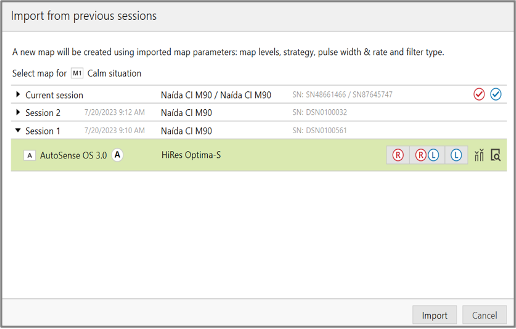
Figure 16. View previous sessions in Target CI v1.5.
Expand each session to review map parameters. M- and T-Levels, as well as Map Option Settings can be reviewed by hovering over the icons on the right-hand side. Once the hearing care professional has decided upon the appropriate map, simply select Right or Left within that session. If the recipient has bilateral cochlear implants, maps can be selected individually from different sessions. Red and blue check marks indicate the selected map for each side. Once a map or maps have been chosen, select Import. The previous map has been added to the map sequence and will fill the next available map slot.
NRI Templates
Another one of the most anticipated Target CI enhancements is NRI templates. NRI templates allow the hearing care professional to quickly select and run NRI during a programming visit or in the OR.
Begin by selecting New Measurement in the NRI tab. To select a preset template, simply choose the dropdown menu. The NRI default template is Odd Electrodes. Additional templates are available, including set to zero, even electrodes, and OR template as shown below.
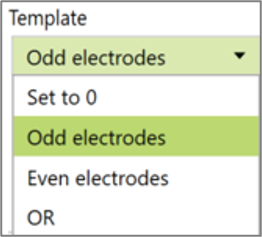
Figure 17. NRI templates in Target CI v1.5.
Select the appropriate template and settings will be automatically applied based on the recipient's age.
To modify the template, select or deselect electrodes by clicking anywhere in the electrode band and setting high and low levels.
In the mapping tab in Target CI v1.5, hearing care professionals can easily view tNRI markers on the map. When measured, tNRI markers will automatically appear in the recipient's map and can be hidden using a right mouse click.
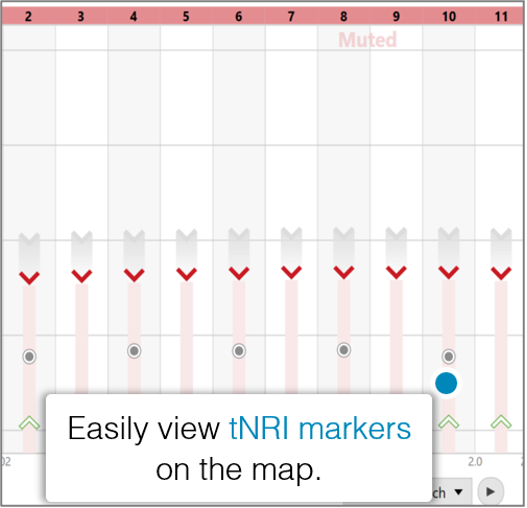
Figure 18. tNRI marker display in Target CI v1.5.
Additionally, when progressive levels are enabled, markers will appear indicating the maximum current level recipients can achieve based on current M-Level and progressive level settings.
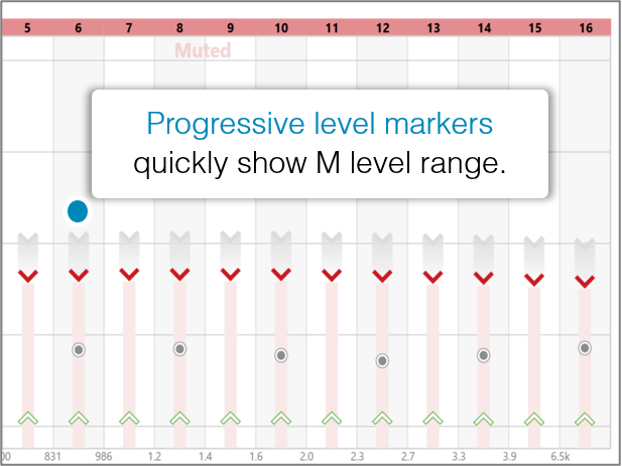
Figure 19. Progressive level marker display in Target CI v1.5.
Thank you for taking time to view this text course on the expansion of the Marvel CI platform and new software innovations from Advanced Bionics.
References
1. Telemedicine Use Among Adults: United States, 2021 https://www.cdc.gov/nchs/products/databriefs/db445.htm
2. https://hbr.org/2015/09/better-value-in-health-care-requires-focusing-on-outcomes
5. Advanced Bionics. (2023). Remote programming from AB: clinical care without limits. Clinical Research Department.
6. Bergeron RF, Agrawal S, Lemolton A, Fariney T, Demers D, Berland A, Bouchard B. (2022). Hearing Assessment and Training in Immersive Virtual Reality; Clinical Model and Validation with Cochlear Implant Users. Sch J Oto. 8(4)-2022. SJO. MS.ID.000292. DOI: 10.32474/SJO.2022.08.00029
7. Dorman M, Natale S, Agrawal S. (2018). The Value of Unilateral CIs, CI-CROS and Bilateral CIs, with and without Beamformer Microphones, for Speech Understanding in a Simulation of a Restaurant Environment. Audiology & Neurotology. 23:270-276.
8. Advanced Bionics (2016) Bimodal StereoZoom Feature: Enhancing Conversation in Extreme Noise for Unilateral AB Implant Recipients White Paper
Citation
Hambrick, L., Vaden, K., Dixon, K. & Johnson, S. (2023). Marvel at the possibilities: remote programming, cros for marvel CI, and updates to target CI. AudiologyOnline, Article 28797. Retrieved from https://www.audiologyonline.com




